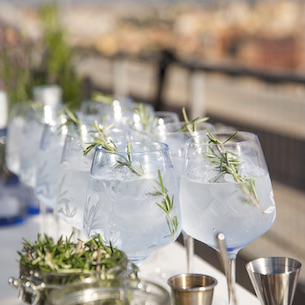.png.transform/rendition-xs/image_image%20(1).png)
Gin
Gin is a spirit flavored with juniper berries (Juniperus communis L.) and other aromas and contains a minimum alcohol content of 37.5% vol.
Although in all gins the tannic flavor of juniper should predominate, nowadays other natural flavorings known as “botanicals” are added to the drink to widen the variety of options for the public without sacrificing its essential and distinctive characteristic.
Gin and other categories
The gin we refer to in this category is exclusively that which is flavored by macerating juniper berries in ethyl spirits of agricultural origin. But there are other categories which, without being gin technically, use this term in their denomination and which are differentiated both from each other and from gin by their production process.
When the flavoring is obtained by distilling the juniper berries instead of macerating them, we call this "distilled gin." At the end of the distillation process, other alcohols and flavoring agents can still be added to the product. We refer to "London gin" when the flavor is obtained through re-distillation in traditional stills of ethanol in the presence of all the natural plant materials used simultaneously.

History of gin
It is believed that gin was created in the 17th century by Franciscus Silvyus for its diuretic medicinal properties. The berry raw material of the spirit was known by its French name genièvre, which in Dutch became genever and then gin in English. Although it originated in the Netherlands, gin gained great popularity in England during the 18th century.
The English were introduced to this drink after the Glorious Revolution — which eventually saw William of Orange take the British crown — by British soldiers returning to their homeland after fighting battles on the European continent. But the reason for the popularization of gin consumption in Great Britain was a decree issued by Queen Anne, who during her reign (1702 - 1714) increased taxes on imported alcoholic beverages and reduced taxes on local producers. This contributed to boosting the local production of gin on the island and its definitive popularity. It is worth noting that at that time, of the 15,000 drinking establishments in London, more than half were gin stores. Although the English account for the majority of gin consumption, this product category comes from Holland and maintains an important tradition in Spain. A unique and characteristic gin is produced in the Balearic Islands, likely due to the British rule of Menorca during the 18th century. Equally valued and traditional are the gins produced in Galicia, Catalonia, and Andalusia.
A unique gin can be found in the Balearic Islands but there are more examples in regions as Galicia, Catalonia and Andalusia
